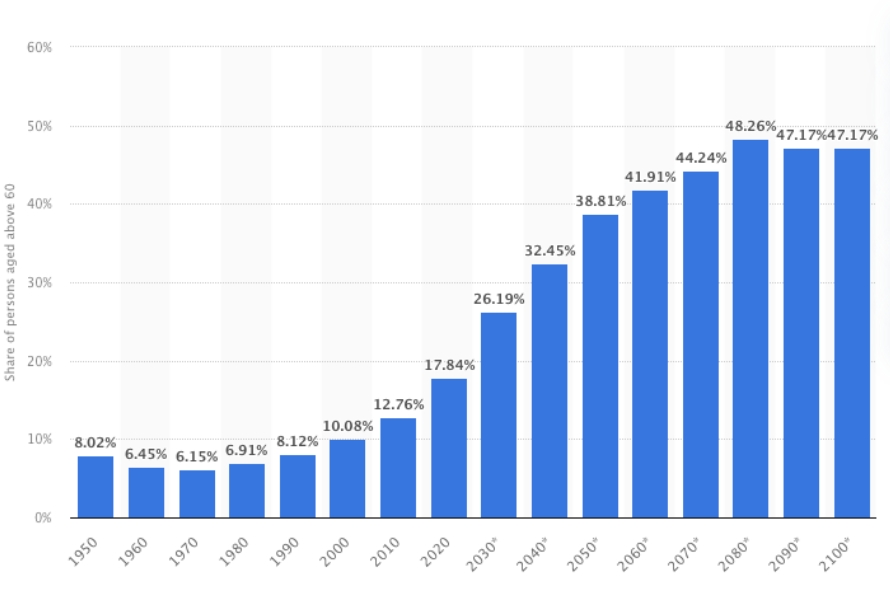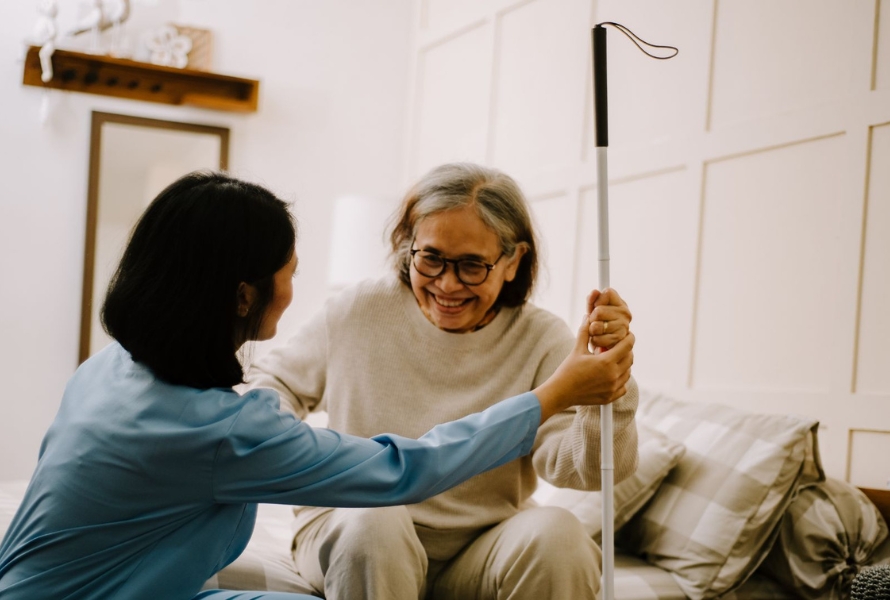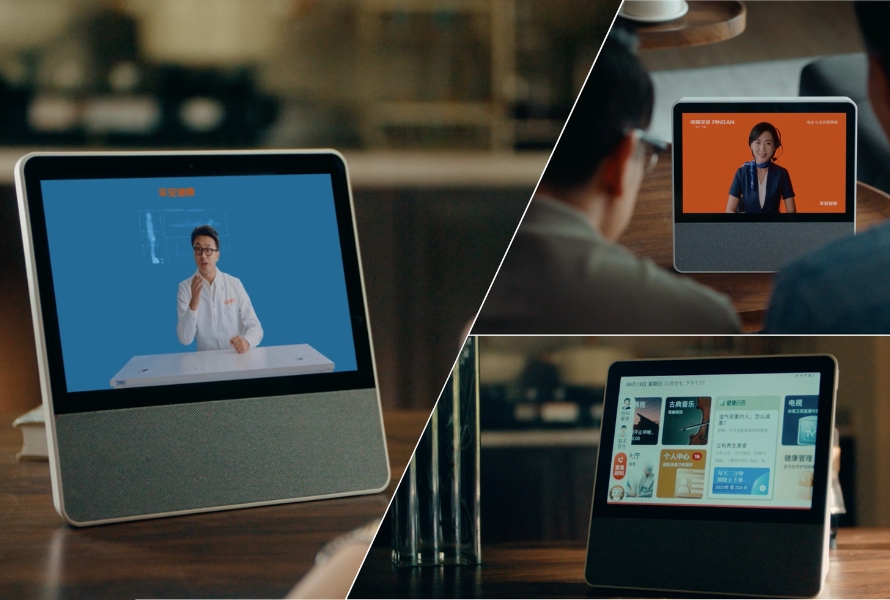Insights, Events and Videos
When Lili’s 70-year-old father broke his leg at home several years ago, the family struggled to find immediate care in their small rural town. Today, the risk of him falling while alone without anyone knowing is much lower. An integrated home-based senior care model is helping to transform the care older people receive at home.
China’s Senior Care Aspirations: 9037
As in many other countries, China’s population is aging fast. In 2023, nearly 21% of the country’s population was 60 or older. This trend is increasing and is forecast to reach nearly 40% by 2050.2 This demographic shift requires new models of care to ensure comprehensive coverage for what’s expected to be 560 million seniors by that time.
For the Chinese, “home” holds great significance both emotionally and culturally. While the approach to senior care in China is becoming more diverse as society develops, aging at home and cherishing family bonds remain the mainstream choice for most elderly individuals.
According to the National Health Commission,2 approximately 90% of senior adults in China prefer aging at home, while 7% rely on community support and 3% stay in institutional care facilities. This distribution is referred to as “9037.”
Uneven Supply and Demand
In the home-based care model, seniors receive assistance in their own residences. Services include assistance with bathing, dressing, health care management, meal preparation and coordinating medical appointments. To make this process easier and more cost-effective, a single entity coordinates and manages various services.
China has encouraged community institutions to coordinate and offer home care services to the elderly.3 This market faces multiple challenges, however, including insufficient service supply, inconsistent quality, labor shortages, unequal resource distribution between urban and remote areas, complexity of coordination and high pricing. According to the Chinese Journal of Health Policy, a survey conducted among 34 community institutions in 12 cities shows a shortfall in sufficient offerings; roughly one-third offer home medical services, while less than 15% provide home hospital beds, rehabilitation services and home nursing.4
Ping An’s home-based senior care program, launched in 2021, strives to address these challenges. The program, pioneered by China’s insurer, is an integrated and comprehensive model that offers nearly 600 services to seniors. Currently, the program is available in 54 cities, benefiting 80,000 individuals.
Each client is provided with an AI-powered smart system, an online concierge and a family doctor. The smart system can detect 13 behavioral risks—including accidental falls, poor sleep quality and intense exercise—as well as nine major real-time environmental risks at the user’s home, such as air quality, gas leaks and excessive smoke concentration. The life concierge is an online personal assistant who swiftly responds to the needs of the elderly around the clock, seven days a week. Managing a wide range of the care services that matter most to the elderly, the assistant coordinates medical care, health management, nutrition, transportation, finance and entertainment. Medical services are provided via a team of 50,000 doctors in the Group’s Ping An Health unit, who are available to provide 24-hour remote medical diagnosis and treatment for customers.
“In the entire senior care service ecosystem, insurance companies play a central role as the payers for these services,” says Michael Guo, Ping An’s co-CEO. “As an integrated financial services provider with 230 million individual customers, Ping An holds significant bargaining power when it comes to integrating suppliers. This robust negotiating position effectively improves management standards.”
The Synergy of Business and Social Impact
Smart systems, concierge platforms and online doctors are some of the measures Ping An has rolled out to offer the elderly a comprehensive range of its health care ecosystem’s services at home. The insurer has been growing its health and senior care ecosystem since 2014, partnering with more than 36,000 hospitals, approximately 231,000 pharmacies and more than 100,000 health care management institutions.
Through integrating insurance with health and senior care services, the insurer’s business has grown significantly. Nearly 64% of Ping An’s 230 million individual customers used services from the health care and senior care ecosystem as of Dec. 31, 2023. Its core business Life & Health’s NBV (new business value) grew 36% like for like, to 39,262 million yuan ($5,421 million), in 2023. And in the same year, customers benefiting from the health and senior care ecosystem contributed over 70% of Life & Health’s NBV.
Lili’s father now benefits from seamless health monitoring and concierge services. When he feels ill, the concierge will connect him with an online doctor for assessments and prescriptions, eliminating the need to initiate the health care process through his daughter. Such stories underscore the value of integrated solutions in providing accessible care for the elderly—ensuring their safety and well-being while aging gracefully at home.




